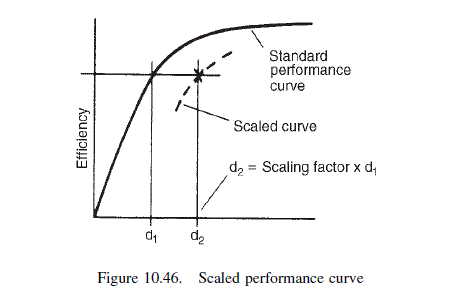Design a cyclone to recover solids from a process gas stream. The anticipated particle size distribution in the inlet gas is given below. The density of the particles is 2500 kg / m ^{3}, and the gas is essentially nitrogen at 150^{\circ} C. The stream volumetric flow-rate is 4000 m ^{3} / h, and the operation is at atmospheric pressure. An 80 per cent recovery of the solids is required.
| Particle size (\mu m ) | 50 | 40 | 30 | 20 | 10 | 5 | 2 |
| Percentage by weight less than | 90 | 75 | 65 | 55 | 30 | 10 | 4 |




